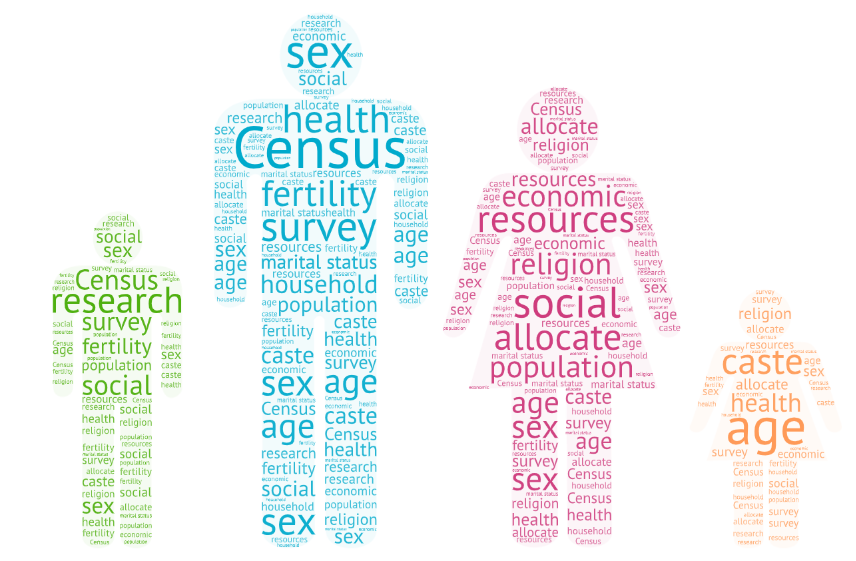Embarking on a census for 1.4 billion (140 crore) people isn’t an easy task. The last time this task was accomplished was more than a decade ago, in 2011. Ever since, there have been several changes that have altered the lifestyle of Indians and their demographics.
Why is there a delay?
Although a census was planned for 2021 (10 years from 2011), the Government of India had it postponed in September 2020, owing to the pandemic. The census planned for 2021 was supposed to be the first of its kind, replacing manual paper entry with a mobile app to expedite the process. Also, news reports indicate that the deadline for freezing administrative boundaries was extended to June 2024, until the Lok Sabha elections. This is required for a census because definite geographic areas help in conducting an efficient census.

How tedious is the task?
There are several steps involved in conducting a census:
- You begin with a housing census. Here, people designated as “enumerators” are trained to conduct the census.
- Enumerators gather details of the residential type and its construction materials.
- This provides enough foundation for the enumerator to visit and record details of each household, such as age, education, and whether they belong to a marginalized group.
- Facilities in the area are also documented, such as the availability of drinking water and electricity.
- To complete the 2011 census, 21 to 27 lakh (2.1 million to 2.7 million) enumerators were deployed, and close to a fourth of the country’s population was interviewed face to face.
What information did the earlier census provide?
- The information made available from the 2011 census study can be classified into Housing, Population, and Resident status.
- Under Housing, it gathered:
- Building number Census house number
- Predominant material of floor, wall, and roof of the census house
- Ascertain use of the actual house
- Condition of the census house
- Household number
- Total number of persons in the household
- Name of the head of the household
- Sex of the head
- Caste status (SC or ST or others)
- Ownership status of the house
- Number of dwelling rooms
- Number of married couples in the household
- Main source of drinking water
- Availability of drinking water source
- Main source of lighting
- Latrine within the premises
- Type of latrine facility
- Waste water outlet connection
- Bathing facility within the premises
- Availability of kitchen
- Fuel used for cooking
- Radio/Transistor
- Television
- Computer/Laptop
- Telephone/Mobile phone
- Bicycle
- Scooter/Motorcycle/Moped
- Car/Jeep/Van
- Availing banking services
- Under Population, the 2011 census gathered:
- Name of the person
- Relationship to head
- Sex
- Date of birth and age
- Current marital status
- Age at marriage
- Religion
- Scheduled Caste/Scheduled Tribe
- Disability
- Mother tongue
- Other languages known
- Literacy status
- Status of attendance (Education)
- Highest educational level attained
- Working any time during the last year
- Category of economic activity
- Occupation
- Nature of industry
- Trade or service
- Class of worker
- Non-economic activity
- Seeking or available for work
- Travel to place of work
- Birthplace
- Place of last residence
- Reason for migration
- Duration of stay in the place of migration
- Children surviving
- Children ever born
- Number of children born alive during the last year
- Data points collected for the National Population Register included:
- Name of the person and resident status
- Name of the person as should appear in the population register
- Relationship to head
- Gender
- Date of birth
- Marital status
- Educational qualification
- Occupation/Activity
- Names of father, mother, and spouse
A lot has changed since 2011
- Migration from rural areas to cities has grown.
- The pandemic forced migration from cities to rural areas.
- Development has turned certain remote areas into small towns with greater populations. Areas that are now called developed were labeled rural in 2011.
Consequently, the data used by the government to allocate resources (vaccines, schools, connectivity) to the Indian population is no longer reliable. Also, India thrives on surveys, but since our current understanding is based on the 2011 census, surveys become error-prone. Survey data may not necessarily represent the larger population. Researchers typically compare survey data to the census for validation.
On the health front, it becomes all the more necessary because the estimates of population growth, age, and fertility among different groups we have today are unreliable.
When to expect the next census?
The Hindu predicts that it could take up to three months after the administrative freeze for the census to begin. This suggests that the census will likely start in October 2024.
Until then, alternative data sources, such as the electoral poll from the Election Commission, could be used as substitutes, albeit with limitations, researchers suggest.
References:
- https://www.nature.com/articles/d41586-024-02321-9
- https://www.thehindu.com/news/national/with-announcement-of-new-notification-census-to-be-delayed-till-at-least-october-2024/article67690661.ece
- https://mohua.gov.in/upload/uploadfiles/files/31375(1).pdf
- https://en.wikipedia.org/wiki/2011_census_of_India


